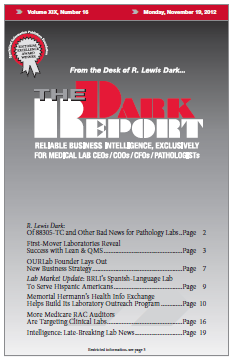CEO SUMMARY: In Houston, Memorial Hermann Healthcare System has put together a health information exchange (HIE) to serve the Houston market. By design, this HIE not only gives physicians immediate access to a wide variety of patient data, but also supports the type of workflow required for Memorial Hermann’s new accountable care organization to succeed. …
Memorial Hermann’s Health Info Exchange Helps Lab Outreach Read More »
To access this post, you must purchase The Dark Report.


